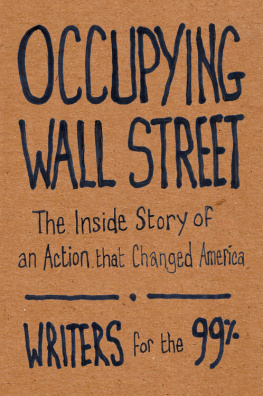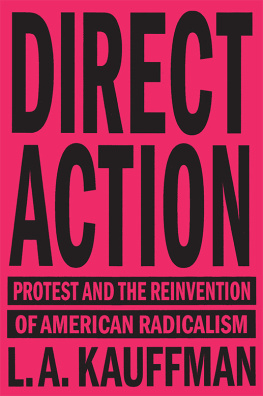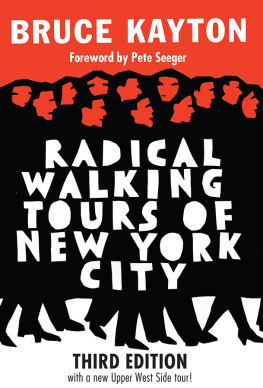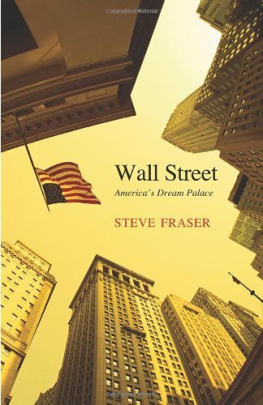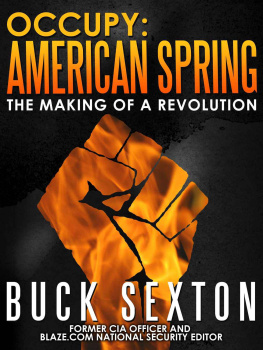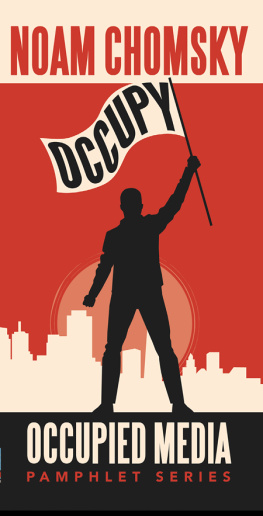Writers for the 99%
A.J. Bauer, Christine Baumgarthuber, Jed Bickman, Jeremy Brecher, Morgan Buck, Ana M. Chavez, Suzanne Collado, Sharon Cooper, Jackie DiSalvo, Robin Epstein, Liza Featherstone, Sean Firko, Claudia Sofa Garriga Lpez, Alejandro Gomez-del-Moral, Kate Griffiths-Dingani, Katherine Gressel, Alex Hall, Samantha Hammer, Malcolm Harris, Zoe Heller, Travis Holloway, Rana Jaleel, Vani Kannan, Danny Katch, Zenia Kish, Sean Larson, Kathryn L. Mahaney, Brian Merchant, Lisa Montanarelli, Debbie Nathan, Angelique V. Nixon, David Osborn, Willie Osterweil, Amity Paye, Jon L Peacock, Justin Owen Rawlins, Colin Robinson, Olivia Rosane, James Frederic Rose, Andrew Ross, Koren Shadmi, Benjamin Shepard, Christine Utz, Danny Valdez, Susan Wilcox, Jamie Yancovitz.


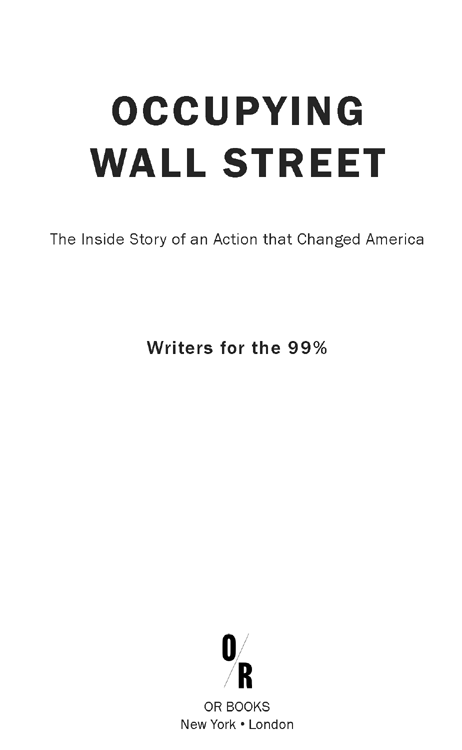
2011 Writers for the 99%.
Published by OR Books, New York and London.
Visit our website at www.orbooks.com
First printing 2011.
All rights reserved. No part of this book may be reproduced or transmitted in any form or by any means, electronic or mechanical, including photocopy, recording, or any information storage retrieval system, without permission in writing from the publisher, except brief passages for review purposes.
Cataloging-in-Publication data is available from the Library of Congress
A catalog record for this book is available from the British Library.
ISBN 978-1-935928-68-3 paperback
ISBN 978-1-935928-64-5 e-book
Typeset by Wordstop Technologies, Chennai, India
Printed by BookMobile in the United States and CPI Books Ltd in the United Kingdom. The U.S. printed edition of this book comes on Forest Stewardship Council-certified, 30% recycled paper. The printer, BookMobile, is 100% wind-powered.
Contents
Zuccotti Park Occupied

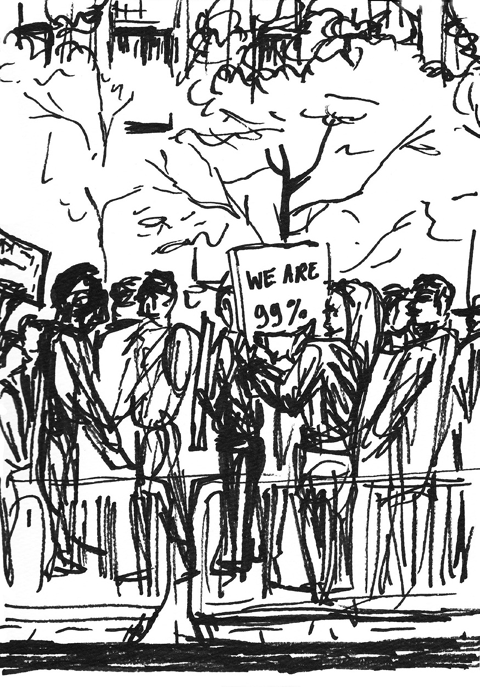
Introduction
This book is an account of the first months of the Occupy Wall Street movement (OWS). It is the result of a collaborative process that began a month after OWS had its first official action on September 17, 2011. Roughly sixty peoplestudents and teachers, writers and artists, workers and professionals, female, male, people of color, white, old, younghave been involved in researching, writing, illustrating and editing the text. Although we make no claim to having produced an official or authorized narrative, many of us are active participants in OWS. All of us support the movement.
The idea of writing this book was first raised at a meeting of OWSs Education and Empowerment working group, held in the public atrium at 60 Wall Street, where many of the committees involved in the occupation meet. The suggestion was met with both interest and wariness. Some felt it was premature to attempt writing such a document. Others worried that the book would present itself, or be perceived as, an official statement, despite reassurances from those working on it that they recognized claims to formal representation of a horizontal movement such as OWS to be both inappropriate and impossible.
At a subsequent meeting, the Education and Empowerment group voted against proceeding with the project. But those who remained enthusiastic about the idea decided to form their own group and to continue meeting independently. Members of this independent group still had several different and competing notions of what the book should be. Some saw it as a compilation of voices from the movement. Others envisioned an analysis of OWSs initial successes and failures. Still others wanted to write a handbook for future occupations. But all agreed that, as far as possible, the book should allow OWS to speak for itself.
To this end, dozens of interviews were conducted with a diverse range of people in and around the occupation. It is on this basis that we call this the inside story of the action. Interviewees, along with any other interested parties, were encouraged to attend the groups editorial meetings which were held at 60 Wall Street and were open to anyone who showed up. And we circulated the minutes of the meetings and the material we gathered to all who wanted to see it.
In the course of the project, participants generally tried to adopt OWSs method of decision-makinghand signs and all. This is not to say that we have always successfully adhered to the model set forth by the movementour organization, like OWS, is an imperfect work in progressbut we have tried to observe its principles of direct democracy, consensus-based decision making, inclusiveness, and transparency.
As we go to press with this book, at the beginning of December 2011, many aspects of the future course of Occupy Wall Street remain unclear. But one thing is starkly evident: Under the banner We are the 99%, the protest has given birth to Americas most important progressive movement since the civil rights marches half a century ago. We hope, in the pages that follow, to tell the story of that beginning.
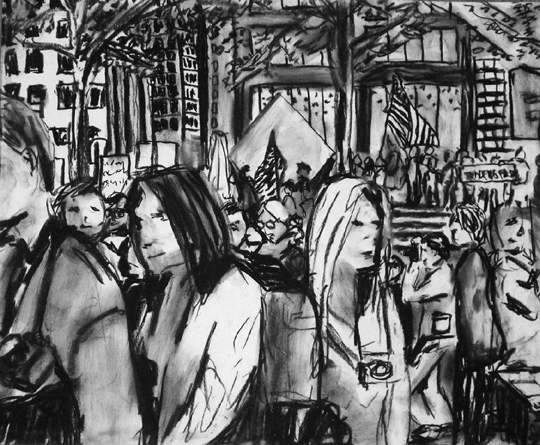
Beginnings
Are you ready for a Tahrir moment?
Call from Adbusters , July 13th 2011
Occupy Wall Street is part of a global movement that has reached nearly every continent in the last year. Although the protests in disparate nations have taken place under different forms of government and have varied in the specificity of their demands, all have expressed a similar outrage with the inequities of unfettered global capitalism. In the first months of 2011, North Africa and the Middle East saw a myriad of popular protests. Unrest in Tunisia broke out on December 17, 2010, after a 26-year-old street vendor, Mohammed Bouazizi, lit himself ablaze because the police kept confiscating his wares to extort money, and he couldnt support his family of eight. Photos and videos of Bouazizi went viral on Facebook, igniting the rage of a generation of Tunisian youth and sparking colossal street demonstrations that led to the January 14 ouster of Tunisian president Ben Ali.
Next, protests erupted in Algeria, Lebanon, Jordan, Mauritania, Oman, and Saudi Arabia. The first Egyptian street protests took place on January 25, and by January 31, more than 250,000 had swarmed Cairos Tahrir Square. In the mild winter weather, tens of thousands pitched small private tents and large open-air tentscanvas or transparent plastic sheets draped over beams. Visitors donated food to the tent city, which brought together people of all ages, ideologies, and fashions. Popular committees were formeda volunteer security service, trash collectors, medical services, a Painters Corner for literate protesters to make signs, outdoor exhibitions of revolutionary banners, a makeshift stage for poets to recite their poems, even an open-air space for weddings. These committees and specially designated spaces would serve as a template for later movements in Europe and the United States.
Three days later, on February 14, the first wave of popular unrest in the U.S. shook the Wisconsin State Capitol in Madison and quickly reached nearby college campuses and the cities of Milwaukee, Green Bay, and Columbus, Ohio. The revolt had a specific targetthe Wisconsin Budget Repair Bill, which also limited collective bargaining rightsbut some protesters brandished Egyptian flags. On February 20, Egyptian union leader Kamal Abbas posted a YouTube video encouraging the workers in Wisconsin. We stand with you as you stood with us, he said.
Next page
